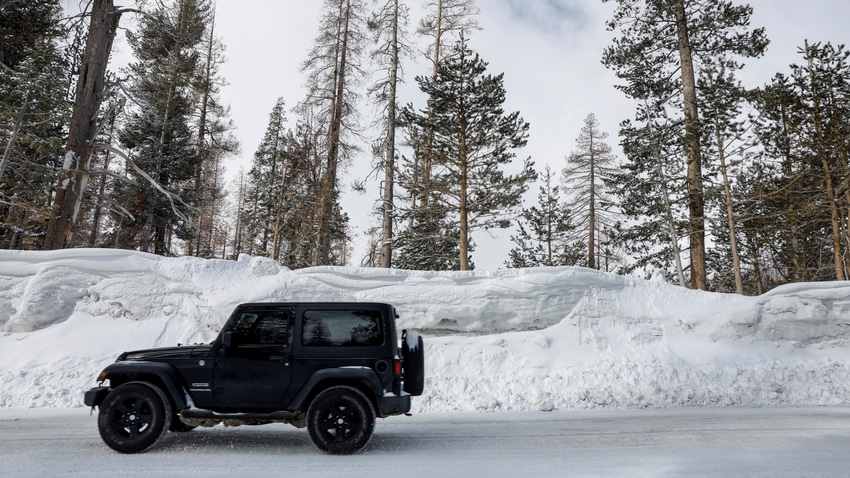April 4, 2023

The snowpack of early April is considered the season's peak, and this year's snow at California's manual testing site near Lake Tahoe is the most abundant in 40 years.
Readings taken April 3 by the state Department of Water Resources showed a snow depth of 126.5 inches and a snow-water equivalent of 54 inches, which is 221% of average for the location. The survey was held at Phillips Station, about 90 miles east of Sacramento.
This year's result is higher than any other reading since the snow sensor network was established in the mid-1980s. Before the network was established, the 1983 April 1 statewide summary from manual snow course measurements was 227% of average. The 1952 April 1 statewide summary for snow course measurements was 237% of average.
“This year’s result will go down as one of the largest snowpack years on record in California,” said Sean de Guzman, manager of DWR’s Snow Surveys and Water Supply Forecasting Unit. “While 1952’s snow course measurements showed a similar result, there were fewer snow courses at that time, making it difficult to compare to today’s results.
"Because additional snow courses were added over the years, it is difficult to compare results accurately across the decades with precision, but this year’s snowpack is definitely one of the biggest the state has seen since the 1950s," he said.
For California’s snow course measurements, only 1952, 1969 and 1983 recorded statewide results above 200% of the April 1 average.
While above average across the state this year, snowpack varies considerably by region. The Southern Sierra snowpack is currently 300% of its April 1 average and the Central Sierra is at 237%, according to DWR. The critical Northern Sierra, where the state’s largest surface water reservoirs are located, is at 192% of its April 1 average.
Big snows, valley flooding
The size and distribution of this year’s snowpack is also posing severe flood risk to areas of the state, especially the Southern San Joaquin Valley. DWR’s State-Federal Flood Operations Center (FOC) is supporting emergency response in the Tulare Lake Basin and Lower San Joaquin River by providing flood fight specialists to support ongoing flood response activities and by providing longer-term advanced planning activities.
The FOC and DWR’s Snow Surveys and Water Supply Forecasting Unit are helping local agencies plan for the spring snowmelt season by providing hydraulic and hydrologic modeling and snowmelt forecasts specific to the Tulare Lake Basin that are informed by DWR’s snowmelt forecasting tools, including Airborne Snow Observatory (ASO) surveys.
Storms this year have caused impacts across the state including flooding in the community of Pajaro and communities in Sacramento, Tulare, and Merced counties. The FOC has provided over 1.4 million sandbags, over 1 million square feet of plastic sheeting, and over 9,000 feet of reinforcing muscle wall, across the state since January.
On March 24, DWR announced an increase in the forecasted State Water Project (SWP) deliveries to 75 percent, up from 35 percent announced in February, due to the improvement in the state’s water supplies.
Gov. Gavin Newsom hasrolled back some drought emergency provisions that officials say are no longer needed due to improved water conditions, while maintaining other measures to build up long-term water resilience and that support regions and communities still facing water supply challenges.
Groundwater basins
While winter storms have helped the snowpack and reservoirs, groundwater basins are much slower to recover, DWR officials say.
Many rural areas are still experiencing water supply challenges, especially communities that rely on groundwater supplies which have been depleted due to prolonged drought. Long-term drought conditions in the Colorado River Basin will also continue to impact the water supply for millions of Californians.
DWR conducts five media-oriented snow surveys at Phillips Station each winter near the first of each month, January through April and, if necessary, May. Given the size of this year’s snowpack with more snow in the forecast, DWR anticipates conducting a May snow survey at Phillips Station. That is tentatively scheduled for May 1.
Source: California Department of Water Resources
About the Author(s)
You May Also Like






